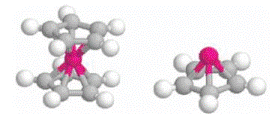Department of Physics and Astronomy: Publications and Other Research

Peter Dowben Publications
Document Type
Article
Date of this Version
7-1-2007
Abstract
We present, herein, an extended study of the half-Heusler alloy NiMnSb, starting with the deposition technique, continuing with the basic structural and magnetic properties of the thin films, and finishing with the electronic and compositional properties of their surfaces. The experimental methods we apply combine magnetization and magnetoresistivity measurements, atomic force microscopy, ferromagnetic resonance, x-ray and neutron diffraction, low energy electron diffraction, angle resolved x-ray photoemission, extended x-ray absorption fine structure spectroscopy, soft x-ray magnetic circular dichroism and spin polarized inverse photoemission spectroscopy. We find that stoichiometric surfaces exhibit close to 100% spin polarization at the centre of the surface Brillouin zone at the Fermi edge at ambient temperatures. There is strong evidence for a moment reordering transition at around 80 K which marks the crossover from a high polarization state (T < 80 K) to a more representative metallic ferromagnetic state (T > 80 K). The results from the different experimental techniques are successively reviewed, with special emphasis on the interplay between composition and electronic structure of the NiMnSb film surfaces. Surface segregation, consistent with a difference in free enthalpy between the surface and the bulk, is induced by annealing treatments. This surface segregation greatly reduces the surface polarization.


Comments
Published in Journal of Physics: Condensed Matter 19 (2007), 315211 (43 pp).Copyright © 2007 IOP Publishing. Used by permission. Online at http://stacks.iop.org/JPhysCM/19/315211